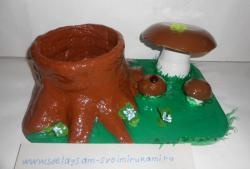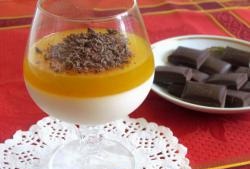We all believe that nothing can happen to us. That our train will never go off the rails, the car will not stop in the middle of the road with a broken wheel, and the mushroom trip will end successfully and the path will lead directly to the house. Usually, in 99.9% of cases, this is exactly what happens.
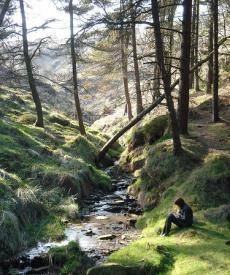
However, every thousandth is still unlucky. If you think about it constantly, it's easier to sit at home and not stick your nose out the door, saying goodbye to hiking and traveling. Although in order to safely get out of such a mess, in fact, you need quite a bit: take along a map of the area, a spare wheel and repair kit when you travel, matches and a knife when you go for mushrooms. The rules for not getting lost are very simple. Surviving lost is also easy - so much so that even girls from high school, lagging behind the group, are able to spend several days in the forest and wait safely until the rescuers find them.
About how to build a hut and acquire the simplest dishes, we wrote below. But it’s much more important what all pilots and astronauts are taught and what all tourists should know, anyway, they prefer sightseeing or individual hiking trips - this is the answer to the question of how to find food in the forest.
Our ancestors looked in surprise at people who could not survive in the forest - a place that had been feeding people for centuries. But today, the vast majority of tourists who find themselves in extreme conditions can starve to death by walking past a richly laid table of forest dishes. In fact, any traveler’s most nutritious and simplest protein food is right under his feet. And for her capture does not need a gun or knife. Enough shovels or, at worst, digging sticks. Because this protein-rich food is earthworms.
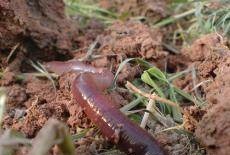
In order to survive, you have to eat them. It is enough to dig up the guest of the worms and place them for several hours in running water so that the digested earth leaves them. It is almost impossible to look at such food, but it is quite real. They even have a taste - far from exquisite, but still. It is even better to cook the rinsed and soaked worms - in this form, eating them is much more pleasant.
The next forest and meat dish is a frequent guest in restaurants, especially French ones. Of course, our frogs are far from being as large as those served in France, but you can eat them, because they taste almost like chicken, and they are very common in the forest. And catching them is easy.

The main thing is to remove the skin and put the legs on sticks to fry. You can eat raw, but people are more used to hot and cooked food.
Mice are harder to get, but also possible. Observations of polar wolves and subsequent experiments on humans, described by Farley Mowet, showed that a person who eats whole field mice, along with the insides, gets a complete set of substances necessary for life and may not even suffer from vitamin deficiency.
With the meat menu sorted out. The second dish a person needs is bread. Of course, a tourist can find himself on an abandoned, but sown field or pick up a hayfire abandoned by a magpie, but in fact, bread in the forest can be obtained much easier. Especially if you meet a river or lake.
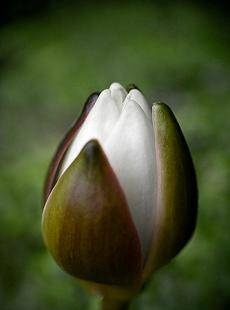
Large white lotus-like flowers, rounded leaves - this is how a water lily or white lily looks like. Now there are not so many of them left in Russian reservoirs, but if it comes to human life, you do not have to choose.The water lily rhizome consists of 49% starch, 8% of protein and about 20% of sugar. Of course, before biting it, you will have to dry it, grind it in flour and soak it in running water to remove tannins. But then, after drying, this flour can be used to bake bread or dough strips wound around sticks over a fire, or simply whiten it with a chubby soup for satiety.
By the way, such flour can be made from acorns and even dandelion roots, eternal weed and thunderstorms in summer cottages. True, they will also have to be dried first, then soaked twice, and only then, dried again, ground in flour or cereal to create porridge, but when hungry, one does not have to pick and choose.
It will fit into flour and rhizome of cattail - the very one from which the children make spears, calling it reeds. Moreover, its root can no longer be soaked, just cut into pieces, dry, grind and cook, cook as much as you want.
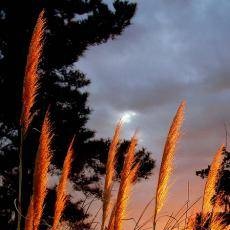
And if you fry the pieces of the roots, you can also make a coffee drink from them. Not arabica, of course, but invigorates during the campaign, but what more could you want from reeds? You can still pick up young shoots, boil them and serve them with frog legs - the taste of shoots resembles asparagus. Remotely, of course. But the menu for the forest "French" restaurant is almost ready.
The Icelandic lichen, which is found in central Russia in pine forests, is also edible. And not just for deer. It contains 44% soluble lechenin starch and about 3% sugar. In order for a person to eat it, it is necessary to deprive the lichen of bitter substances. Therefore, Icelandic moss is soaked with soda or potash for a day. For those who are not used to carrying soda on an industrial scale, you can advise pouring Icelandic moss with ash infusion. About 2 tablespoons of ash per liter of water, add another two liters of water and you can soak a hundred grams of Icelandic moss. After a day, the moss needs to be washed and soaked for another day in plain water. And then either dry, grind and add to other flour, or boil it in jelly and pour in the jelly from the extracted meat or jelly from wild berries. In addition, the cunning Swedes drive alcohol from the Icelandic lichen. So the forest is not only ready to feed and shelter any stray tourist, but also give the skilled person the opportunity to have fun and warm themselves from the inside.
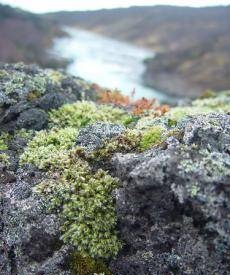
Of the other green edible plants that are usually forgotten, it is worth mentioning burdock. Its roots are best harvested in early spring or late autumn, but even in summer they are quite capable of feeding a tourist. They can be eaten raw, cooked and even better baked. It completely replaces potatoes, carrots or celery. And if you boil peeled and chopped burdock roots with sour or sorrel, you can get an excellent sweet and sour jam.
A familiar and seemingly useless plant, wood lice can also be eaten - in salads, soups or even mashed potatoes. They do exactly the same with sour acid, chamomile and rabbit cabbage. And juveniles will completely replace Brussels sprouts in forest green soups or in baked form, as a side dish.
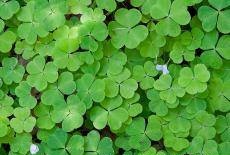
The forest table is not as familiar as our ordinary, but much richer than ordinary tourists. When you have canned food and cereals with you, you can neglect it, but you still need to know about it. And then, in an extreme situation, decide: is it worth dying of hunger next to such exquisite dishes.
one more article. . . .
Survival in the forest
There are many cases when people, having gone to the forest and not having enough experience and knowledge of local conditions, easily lost their way and, having lost their orientation, found themselves in distress.
How should a man lost in the forest behave?
Having lost orientation, he should immediately stop moving and try to restore it with a compass or using various natural signs.If this is difficult, then temporary parking in a dry place should be arranged, which is not easy to do, especially in mossy forests, where the ground is covered with a continuous carpet of sphagnum, which greedily absorbs water (500 parts of water per part of dry matter). A temporary shelter can be a canopy, hut, dugout.
In warm time, you can limit yourself to building a simple canopy. Two 1.5-meter-thick hand-thick stakes with forks at the end are driven into the ground at a distance of 2-2.5 m from each other.
A thick pole - a bearing beam is laid on the forks. Four to five poles are leaned against it at an angle of 45-60 ° and secured with a rope or flexible branches. Three to four poles - rafters are tied to them (parallel to the ground), on which, starting from the bottom, tile-like (so that each subsequent layer covers the underlying half) lay branches, branches with dense foliage or bark.
From lapnik or dry moss make a litter. A canopy is dug in a shallow groove so that water does not flow under it in case of rain.
A gable hut is more convenient for housing. It is built on the same principle, but poles are laid on both sides of the load-bearing beam. The front of the hut serves as an entrance, and the back is covered with one or two poles and braided with lapnik. Before proceeding with the construction, it is necessary to prepare materials - branches, bars, lapnik, bark.
To obtain pieces of bark of the required size, deep vertical cuts (to wood) are made on the larch trunk at a distance of 0.5-0.6 m from each other. Then, from above and below, these strips are cut with large teeth of 10-12 cm across and carefully peeled off with a ax or knife. In winter, a snow trench can be built for shelter. It is opened in the snow at the foot of a large tree. The bottom of the trench is lined with several layers of spruce branches, and on top they cover with poles, tarpaulin, parachute fabric.
How to navigate in the forest?
Being in the taiga, it is difficult to move among the rubble and windbreaks, in the thicket, overgrown with shrubs. The seeming similarity of the situation (trees, folds of terrain, etc.) can completely disorient a person, and he will move in a circle, not suspecting his mistake. But, knowing various signs, you can navigate the cardinal points even without a compass.
So, the birch and pine bark on the north side is darker than on the south side, and tree trunks, stones, rock ledges are densely covered with moss and lichens. Tar drops on the trunks of conifers stand out on the north side less abundantly than on the south. All these signs are clearly expressed in a separate tree in a clearing or edge.
To maintain the intended direction, they usually choose a clearly visible landmark every 100-150 m of the route. This is especially important if the path is blocked by a blockage or dense shrub that forces you to deviate from the direct direction. Trying to go ahead is always fraught with injury.
Movement in the forest
It is extremely difficult to cross in the taiga in winter, when the snow cover is very deep and it is almost impossible to overcome snowy areas without snowshoeing skiing. Such skis, with well-known dexterity, are made in the form of a frame of two branches 2-2.5 cm thick and 140-150 cm long. The front end of the ski, steamed in water, is folded upward, and the frame (the width in the center should not be less than 30 cm) plaited with thin flexible branches. In front of the ski, four transverse and two longitudinal slats make foot support for the size of the shoe.
In winter, you can move around the beds of frozen rivers, while observing the necessary precautions. So, we must remember that the current usually breaks the ice from below, and it becomes especially thin under the snowdrifts on the steep banks. In riverbeds with sandbanks, natanks often form, which, when frozen, turn into peculiar dams.
Most often they are hidden under deep snow and are difficult to detect. Therefore, it is better to avoid all obstacles on river ice, and in places of river bends you need to stay away from the steep bank, where the current is faster and the ice is thinner.Often after the river freezes, the water level decreases so quickly that "pockets" are formed under thin ice, which pose a great danger. On ice, which seems not strong enough, but there is no other way, they move crawling. In spring, ice is the thinnest in areas overgrown with sedge and in flooded bushes.
Small taiga rivers are passable for light inflatable boats and rafts. In the center of the raft, you can build a small shelter (hut) from rain and wind and prepare a place for a fire by pouring layers of sand or pebbles. To control the raft, two or three long poles are cut down. An anchor can be a heavy stone with a strong rope.
Swamps and bogs
The most insidious obstacles in the taiga are swamps and bogs. A characteristic feature of the marshland is its poor habitability, lack of roads, the presence of impenetrable, and sometimes completely impassable areas. Marshes are rarely equally passable throughout and at different times of the year. Their surface is very deceiving. The most impassable swamp bogs, the hallmarks of which are the whitish surface layer.
Small wetlands can be easily circumvented by stepping on bumps or rhizomes of shrubs, or wade, having previously felt the sixth bottom. After making sure that it is impossible to pass or bypass dangerous sections, you can scribble some branches, cross several poles crosswise or tie a mat of reeds, grass, straw and cross this prepared “bridge” onto solid ground.
Lakes overgrown with peat and vegetation cover a great danger to humans. They often have deep shady ponds, overtaken by floating plants and grass, and these "windows" outwardly almost do not stand out. You can fall through them suddenly if you neglect the precautions. Therefore, passing through an unfamiliar swamp, one should step slowly, carefully, without making sudden movements, always have a pole with him and probe the ground ahead.
Having fallen into the swamp, you do not need to panic, make sudden movements. It is necessary to carefully, leaning on a pole lying across, take a horizontal position, then try to get the reeds, grass with your hands and, pulling yourself, crawl away from the dangerous place. If several people move through the swamp, you need to stay closer to each other in order to be able to help someone at any moment.
You can check the thickness of the peat layer, its density and hardness of the soil using a metal pin with a diameter of 20 mm with notches after 10 cm. To overcome the vast wetlands, you can make bridges and other devices from improvised means.
Cooking and making a fire
Fire is necessary for heating, drying clothes, alarm, cooking, purifying water by boiling it. Survival time will increase or decrease depending on your ability to make fire.
If there are matches, you can make fire in any conditions and in any weather. If action is expected in remote areas, stock up with enough matches that you should always keep with you in a waterproof bag. It is necessary to learn how to keep the match flame in the strong wind as long as possible.
Fuel, tinder and spotting for a campfire
Small fires are easier to build and control than large ones. A few small bonfires lit in the cold weather around you will give more heat than a large bonfire.
Define and clearly limit the place of fire to avoid a large forest fire. First of all, when you need to make fire on wet soil or in snow, build a platform of logs or stones. Protect the fire from the wind with a shield (windbreaker) or a reflector that will direct heat in the required direction.
Use dried trees and branches as fuel. In wet weather, you will find dry fuel under the trunks of fallen trees.In areas with sparse vegetation, dry herbs, animal fats, and sometimes even coal, shale tar or peat, which can be on the surface of the soil, can be used as fuel.
If there are fragments of an airplane in an accident nearby, use a mixture of gasoline and oil (oil) as fuel. Some plants can also be used, but by no means poisonous.
To light a fire, take advantage of what is quickly ignited, for example, small bars of dry wood, fir cones, tree bark, twigs, palm leaves, dried spruce needles, herbs, lichens, ferns, spongy filaments of a giant raincoat (mushroom), which also edible. Before you try to light a fire, make shavings from dry wood. One of the most convenient and best materials for making fire is the rot of dried trees or logs.
Rot can be found even in wet weather, clearing the wet top layer of such a tree with a knife, a sharp stick or even with your hands. Paper and gas will come in handy as tinder. Even in the rain, the resin of spruce cones or dry stumps quickly light up. Dry birch bark also contains tarry substances that quickly catch fire. Lay these materials in the form of a wigwam (hut) or a stack of logs.
Maintain fire properly. Use freshly cut logs or the end face of a thick rotten log so that the fire burns slowly. Protect the red lights from the wind. Cover them with ash and a layer of soil on top. Thus, it will be easier for you to maintain fire than to re-build it.
In northern ice or in areas where other fuels are not available, animal fat should be used.
Making fire without matches
Before you try to light a fire without matches, prepare a few dry, flammable materials. Then cover them from the wind and moisture. Good substances can be rot, clothing rags, rope or twine, dry palm leaves, wood shavings and sawdust, bird feathers, woolly villi of plants and others. To stock up on them for the future, put the part in a waterproof bag.
"The sun and the lens." The camera lens, a convex lens from binoculars or a telescope, and finally, a mirror can be used to focus sunlight on flammable substances.
Flint and flint (steel plate). If there are no matches, this is the best way to quickly light a dry tinder. As flint, the corresponding side of a waterproof match box or a solid piece of stone can serve. Hold the flint as close to the tinder as possible and hit it against the steel blade of the knife or some small block of steel.
Hit so that sparks hit the center of the tinder. When it starts to smoke, lightly blow on the flame. You can add some fuel to the tinder or transfer the tinder to fuel. If you fail to carve a spark with the first stone, try with another.
The friction of a tree on a tree. Given that getting fire by friction is quite difficult, use it as a last resort.
Bow and auger. Make a springy bow by pulling it with a string, rope or belt. Use it to scroll a dry, soft shaft in a small hole made in a dry, hard block of wood. As a result, you get a powdery black dust, in which a spark will appear with further friction. Lift the unit and pour this powder onto a flammable substance (tinder).
Building a fire with a belt. To do this, use a thick strip of dry rattan (palm tree) about 1 to 4 inches thick and 2 steps long, and a dry tree. Install it on the ground, cut from one end and insert the other shaft so that the first is held in a dissected form. Insert a small lump of tinder into the cleavage and grab it with a belt, with which you begin to rub back and forth, while supporting the shaft with your feet.
Getting fire with a saw. It is two pieces of dry wood that carefully rub one on top of the other. This method is mainly used in the jungle.For friction, use a dissected piece of bamboo or other dry wood and a coconut flower wrapper as a wooden base. A good tinder can be a brown fluff covering the bee palm and dry material that you will find at the base of coconut leaves.
Ammunition and gunpowder. Make a pile of dry wood and other flammable material. Put gunpowder spilled from several rounds at its base. Sprinkle some powder on the two stones of your choice. Hit them against each other closer to the bottom of the tinder. Gunpowder and tinder ignite from sparks.
Cooking fire
A small fire and something like a stove are all that is required for cooking. Set the logs for fire crosswise to get a uniform layer of coals. Build a simple device from two logs, stones or in the form of a narrow ditch, on which you could put kitchen utensils on fire. A large can of canned food can serve as a mobile stove, especially in northern conditions.
The best temperature for cooking will provide a uniform layer of coal. For baking, fire should be built in a hole.
Raising the fire underground, often practiced by the Indians, requires drilling one or more outlets on the windward side. Outlets play the same role as an exhaust pipe in the stove. This cooking method has great advantages in ensuring safety in survival conditions, since it significantly reduces the possibility of detecting smoke and fire. In addition, it neutralizes the negative effect of strong winds.
Water supply
It is known that the human body is almost 65% composed of water. Water is part of the tissues, without it normal functioning of the body, the implementation of the metabolic process, maintaining the heat balance, removing metabolic products, etc. are not possible. Dehydration of the body by only a few percent leads to disruption of its vital functions.
The lack of water during the day (especially in hot areas) already negatively affects a person’s moral state, reduces his fighting efficiency, strong-willed qualities, causes fatigue.
Loss of large amounts of water by the body is dangerous to human life. In hot areas, without water, a person can die in 5-7 days, and without food in the presence of water a person can live for a long time. Even in cold zones, to maintain normal health, a person needs about 1.5-2.5 liters of water per day.
If the amount of water that a person loses reaches 10% of body weight per day, a significant decrease in performance occurs, and if it increases to 25%, then this usually leads to death. However, even with a large loss of water, all disturbed processes in the body are quickly restored if the body is replenished with water to normal.
Knowing the signs indicating a lack of water in the human body, you can approximately determine the percentage of dehydration relative to body weight.
Signs indicating a lack of water in the human body:
1-5% - Thirst, poor health, slow motion, drowsiness, redness in some places of the skin, fever, nausea, indigestion,
6-10% - Shortness of breath, headache, tingling in legs and arms, lack of salivation, loss of ability to move and violation of speech logic,
11-20% - Delusions, muscle spasms, swelling of the tongue, dullness of hearing and vision, cooling the body.
At an ambient air temperature of + 30 ° C, even 20-25% of dehydration is easier to tolerate than dehydration of 10-15%, but at a higher air temperature.
It is allowed to establish the norm of about 2.5 liters of water per day. In hot weather and with great physical exertion, the need for water increases significantly and reaches 4 liters per day. But not all areas of the world have natural sources of water (rivers, lakes, ponds) and not all of these sources can be used. You need to know how and where to find groundwater.
In conditions of autonomous existence, especially in areas with a hot climate, with limited water reserves or in their absence, water supply becomes a problem of paramount importance. It is necessary to find the source of water, purify water from organic and inorganic impurities, if necessary, or desalinate it, if it contains a large amount of salts, to ensure its storage.
Natural sources can be divided into several groups: open water bodies (rivers, lakes, streams); ground water bodies (keys, springs, water accumulations in underground tanks); biological water sources (water-bearing plants); atmospheric water (rain, snow, dew, desalinated ice).
In areas with temperate and cold climates, the search for water sources is not difficult. The abundance of open ponds, snow cover allow you to timely meet the body's needs for water, to create the necessary reserves of water for drinking and cooking.
Only in some cases it is necessary to use natural signs to exit to the source of water (animal trails, usually leading to water, moist soil of lowlands). It is much more difficult to provide yourself with water in the desert, where water sources are often hidden from the eyes and it is impossible to detect them without knowledge of special signs and features of the relief. They can be indicated by the nature of the vegetation, indicator plants, artificial signs (“obo”), etc.
Rainwater. To collect rainwater, dig a hole and put it in large leaves so that the collected water does not soak into the ground.
Dew. When it rains, tie a cloth around the tree. Water flowing along the trunk will linger and drip into the container, placed below.
Water from the springs and springs of mountain and forest rivers and streams can be drunk raw, but before quenching thirst with water from standing or low-flowing water bodies, it is cleaned of impurities and disinfected.
Creating a supply of water during transitions is advisable only in conditions where water sources are located at a great distance from each other. It is possible to store in any containers. But since in hot tropical climates, water during storage quickly changes its taste, blooms, it is boiled during a break.
With limited water supplies, especially in hot climates, where the body loses a lot of fluid with sweat, dehydrates, it is very important to reduce sweating. This can be achieved by protecting yourself from direct solar radiation with the help of a simple sunshade, limiting physical activity in the hot time of the day, moisturizing clothes, etc.
